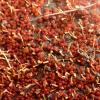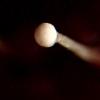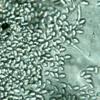
25-11-2025 14:24
Thomas Læssøehttps://svampe.databasen.org/observations/10490522

25-11-2025 11:03
Mick PeerdemanHi all,One of my earliest microscopy attempts, so

24-11-2025 15:23
Arnold BüschlenHallo, auf einer offenen Kiesfläche am Rande ein

23-11-2025 11:16
Bohan JiaHi, I found small discs growing on dead stem of

21-11-2025 10:56
 Christopher Engelhardt
Christopher Engelhardt
Very small (~0,5 mm) white ascos, found yesterday
Nectria stilbellae
is classified in Nectria subg. Dialonectria SACC.(SAMUELS & al., 1991). Species in this group are characterized by
having superficial, usually smooth, red perithecia the wall of which
is less than 25 urn wide.
Nectria stilbellae is distinguished primarilyby its anamorph and is most closely related to
N. consors (SAMUELS,1977),
N. camelliae (SHIPTON) BOESEWINKEL (SHIPTON, 1979; BOF.SEWINKEL,1982), and the
Nectria species that haveDescription ettsils in: http://www.landesmuseum.at/pdf_frei_remote/Sydowia_43_0249-0263.pdf
The anamoph, sTilbella aciculosa (ELLIS & EVERHART) SEIFERT have Conidia ellipsoidal-fusiform5—7(-9) x 2.5-3 microns.
This fungi was reported in Panama and cta RIca by SEifert. in 1985; SEIFERT, K.A. (1985). A monograph of
Stilbella and some allied hyphomycetes. - Stud.Mycol. 27: 1-235.
262

Your fungus looks like Nectria pseudotrichia, what is the size and shape of ascospores?
Christian

Are the ascomata changing of color in 3% KOH or lactic acid? if so, what is this coloration?
Moreover, could you please to say what is the size of conidia and provide an image of the ascospores?
Christian






